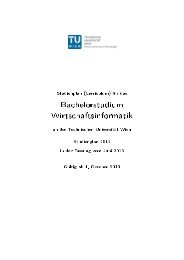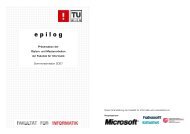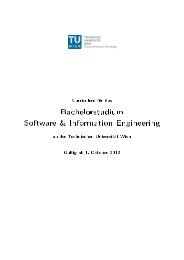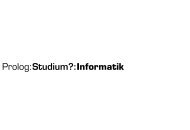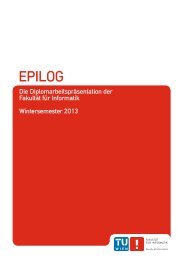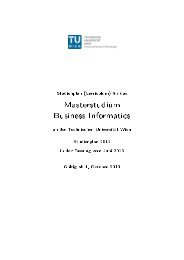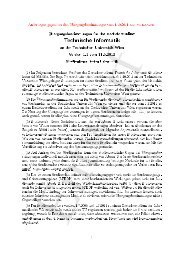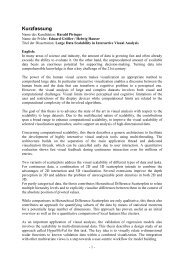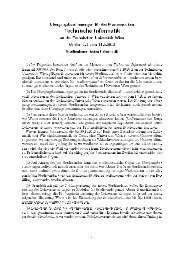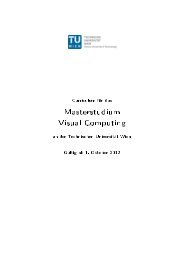e p i l o g - Fakultät für Informatik, TU Wien
e p i l o g - Fakultät für Informatik, TU Wien
e p i l o g - Fakultät für Informatik, TU Wien
Erfolgreiche ePaper selbst erstellen
Machen Sie aus Ihren PDF Publikationen ein blätterbares Flipbook mit unserer einzigartigen Google optimierten e-Paper Software.
Thomas Strnad<br />
Validation of the DECOS Encapsulated Execution Environment<br />
Studium: Diplomstudium <strong>Informatik</strong><br />
BetreuerIn: O.Univ.Prof. Dr. Hermann Kopetz<br />
Abstrakt: The DECOS (Dependable Embedded COmponents and Systems)<br />
integrated architecture allows the integration of different embedded<br />
application sub-systems with different criticality into the same hardware<br />
infrastructure. In the DECOS integrated architecture, computational<br />
resources (CPU time, memory, I/O) and communication resources (network<br />
bandwidth) are shared among multiple software components in order to<br />
reduce the number of deployed embedded computer nodes, which implies<br />
the reduction of system cost. The DECOS integrated architecture consists of<br />
four layers: the I/O layer, the application layer, the middleware layer, and<br />
the core layer. Distributed soft- ware applications run at the application<br />
layer. So called DECOS high-level services (virtual network service, virtual<br />
gateway service, diagnostic service) are executed in the middleware layer.<br />
The core layer provides services that are in charge of predictable and faulttolerant<br />
communication among different DECOS integrated nodes. In order<br />
to perform a seamless integration of different software modules that may<br />
be developed by different vendors, the DECOS integrated architecture<br />
services guarantee that different applications do not affect the operation of<br />
each other in an undesired manner: An application job that is executed in<br />
one of the DECOS components can not affect other application jobs or<br />
DECOS services. A prototype implementation of the DECOS integrated<br />
architecture was developed at the Vienna University of Technology. The<br />
encapsulated execution environment is in charge of preventing non- specified<br />
interaction among the application jobs (implemented as LXRT tasks)<br />
executed in the DECOS components. The encapsulated execution<br />
environment is implemented by using the Linux operating system with RTAI<br />
and LXRT patches. The objective of this work is to validate whether Linux-<br />
RTAI-LXRT fulfils the requirements to be used as an encapsulated execution<br />
environment in the DECOS integrated architecture. Validation is performed<br />
by means of software implemented fault injection (SWIFI). SWIFI is usually<br />
deployed to emulate the occurrence of hardware faults. In this work, SWIFI<br />
is used to perform the emulation of software faults in order to observe, if a<br />
faulty application job that is executed in a DECOS component can affect the<br />
operation of other application jobs or the DECOS services.<br />
7



